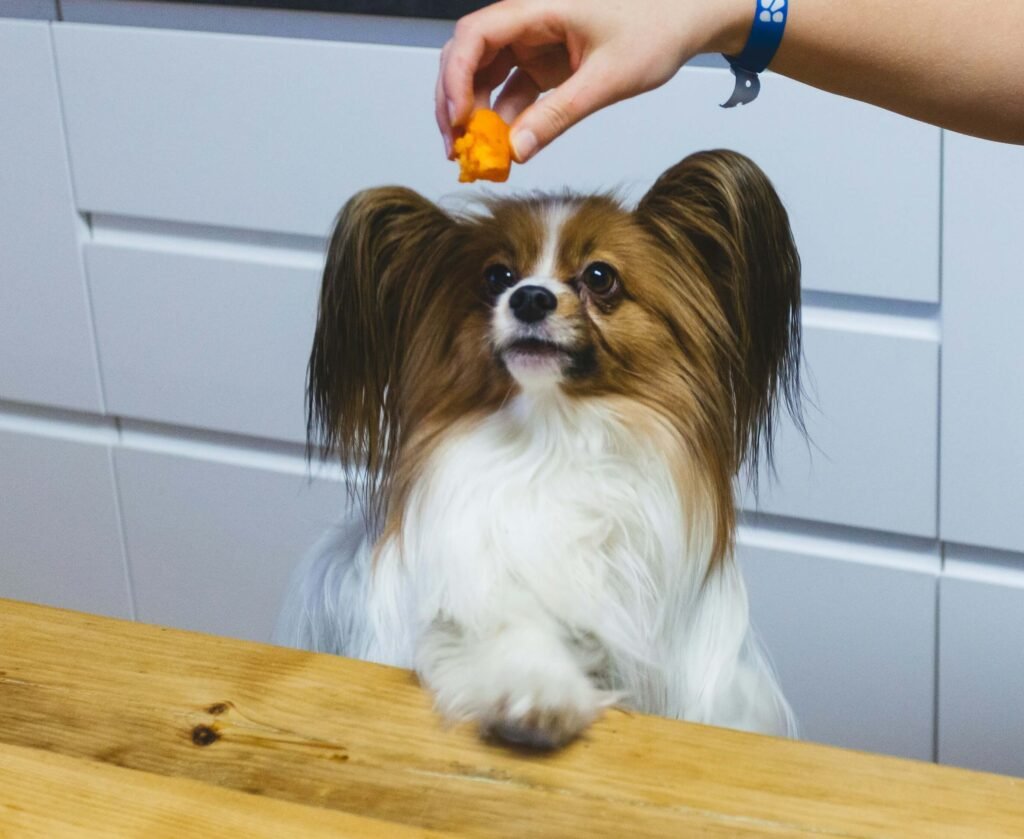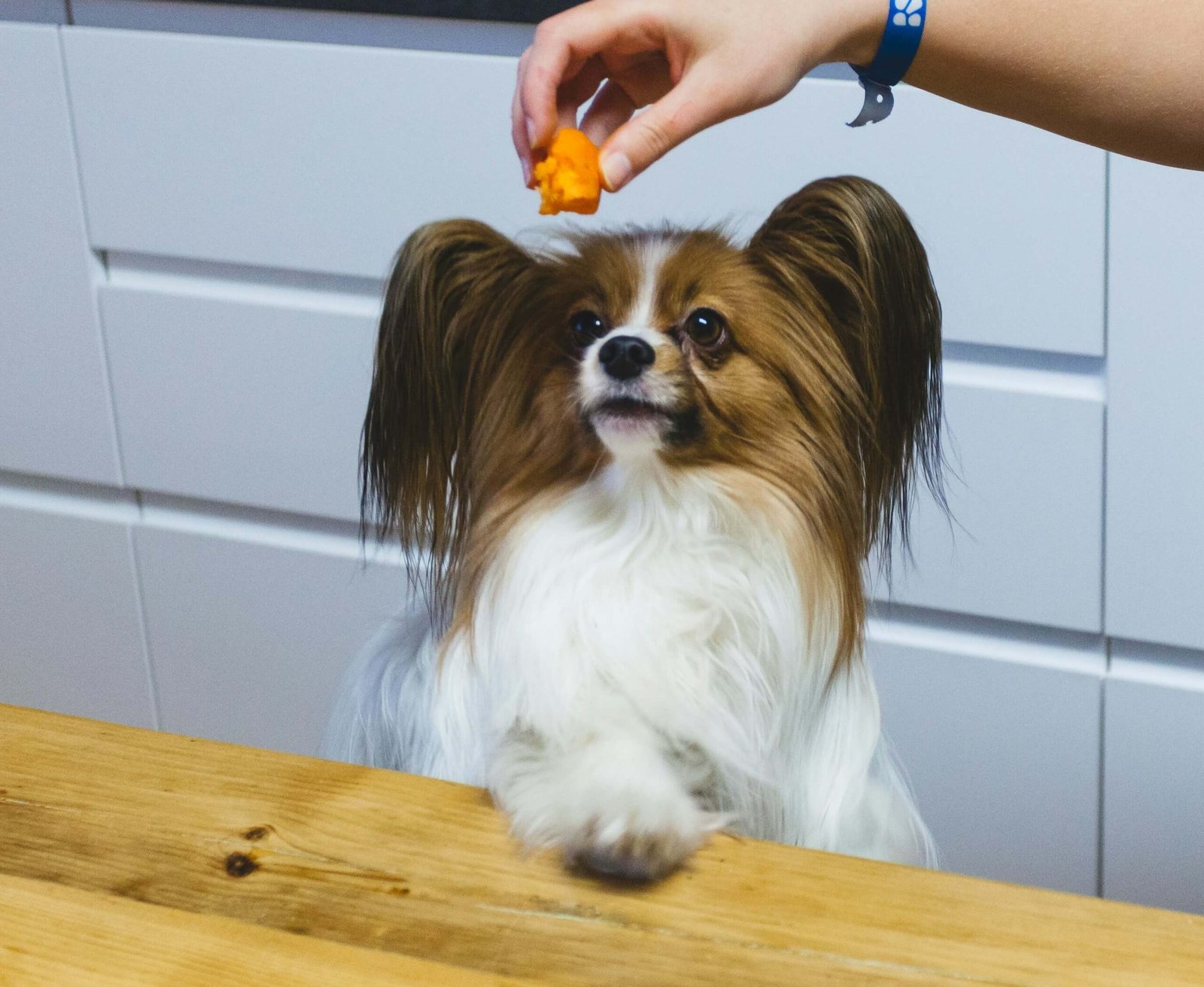Can Dogs Eat Cantaloupe?
As a pet owner, you’ve probably found yourself wondering whether certain human foods are safe to share with your furry friend. One such food is cantaloupe—a sweet, juicy fruit that’s a favorite summertime snack for many people. But can dogs eat cantaloupe? The short answer is yes, in moderation! Cantaloupe is not only safe for dogs but also packed with nutrients like vitamins A, C, and potassium, which can benefit their overall health. However, like any food, it’s important to feed it responsibly to avoid potential risks. In this blog post, we’ll explore everything you need to know about sharing cantaloupe with your dog, from its nutritional benefits to serving tips and precautions.
Nutritional Benefits of Cantaloupe for Dogs
Cantaloupe isn’t just a tasty treat for humans—it can also be a healthy snack for dogs when served correctly. Here’s how cantaloupe can benefit your pup:
Rich in Vitamins : Cantaloupe contains vitamin A, which supports eye health and boosts the immune system.
High in Vitamin C : This antioxidant helps reduce inflammation and promotes faster recovery from injuries.
Hydration Boost : With its high water content, cantaloupe can help keep your dog hydrated, especially during hot weather.
Low in Calories : It’s a guilt-free snack for dogs watching their weight, as long as it’s served in moderation.
Good Source of Fiber : The fiber in cantaloupe aids digestion and prevents constipation.
While cantaloupe offers these nutritional perks, it’s essential to remember that portion control is key to ensuring your dog enjoys its benefits without any adverse effects.
How to Safely Serve Cantaloupe to Your Dog
Before offering cantaloupe to your dog, it’s crucial to prepare it properly to avoid choking hazards or digestive upset. Here’s how to serve it safely:
Remove the Rind : The tough outer skin of cantaloupe can be difficult for dogs to chew and may cause blockages if swallowed.
Cut into Small Pieces : Slice the fruit into bite-sized chunks to make it easier for your dog to eat.
Avoid Seeds : While cantaloupe seeds aren’t toxic, they can pose a choking hazard or cause gastrointestinal irritation.
Serve in Moderation : Limit the amount of cantaloupe to a few small pieces per serving to prevent overeating.
Monitor for Reactions : Watch for signs of allergies or digestive issues, such as vomiting, diarrhea, or excessive gas.
By following these guidelines, you can ensure your dog enjoys cantaloupe as a safe and healthy snack.
Check this guide 👉Can Dogs Eat Cherries? Best 7 Health Tips!
Check this guide 👉Can Dogs Eat Peaches? Best 7 Expert Tips!
Check this guide 👉Can Dogs Eat Kiwi? Best 7 Expert Tips!

Benefits of Cantaloupe for Dogs | Precautions When Feeding Cantaloupe |
|---|---|
High in vitamins A and C | Remove rind and seeds before serving |
Hydrating due to high water content | Avoid overfeeding to prevent stomach upset |
Low-calorie snack for weight management | Monitor for allergic reactions |
Supports healthy digestion | Feed in small, bite-sized pieces |
Boosts immune system | Not suitable for diabetic dogs in large amounts |
Potential Risks of Feeding Cantaloupe to Dogs
While cantaloupe is generally safe, there are some risks to be aware of to ensure your dog’s safety. Here’s what to watch out for:
Sugar Content : Cantaloupe contains natural sugars, which can be harmful to dogs with diabetes or obesity.
Choking Hazard : Large chunks or uncut pieces of cantaloupe can pose a choking risk, especially for smaller dogs.
Digestive Upset : Overeating cantaloupe can lead to diarrhea or an upset stomach due to its fiber content.
Allergic Reactions : Some dogs may have sensitivities to cantaloupe, resulting in symptoms like itching or swelling.
Pesticide Residue : Non-organic cantaloupes may contain harmful chemicals, so always wash the fruit thoroughly.
Understanding these risks will help you feed cantaloupe to your dog safely and minimize any potential problems.
Signs Your Dog May Have Eaten Too Much Cantaloupe
Even though cantaloupe is a healthy snack, overfeeding can lead to discomfort or health issues. Here’s what to look for if your dog has had too much:
Diarrhea : Excessive fiber intake can cause loose stools or frequent bathroom trips.
Vomiting : Eating large amounts of cantaloupe may irritate your dog’s stomach, leading to vomiting.
Lethargy : Consuming too much sugar can leave your dog feeling sluggish or unenergetic.
Bloating : Overeating cantaloupe can cause bloating or abdominal discomfort.
Weight Gain : Regularly feeding sugary snacks like cantaloupe can contribute to unhealthy weight gain over time.
If you notice any of these signs, reduce or eliminate cantaloupe from your dog’s diet and consult your veterinarian for advice.
Other Fruits Safe for Dogs
If your dog enjoys cantaloupe, you might be curious about other fruits that are safe to share. Here are some dog-friendly options to consider:
Blueberries : These tiny berries are rich in antioxidants and make a great low-calorie snack.
Watermelon : With its high water content, watermelon is hydrating and refreshing—just remove the seeds and rind.
Apples : Apples (without seeds or core) are a crunchy, fiber-rich treat that dogs often love.
Strawberries : Packed with vitamin C and fiber, strawberries can be a sweet and healthy snack in moderation.
Pears : Sliced pears (seed-free) provide vitamins and hydration without added sugars.
Incorporating these fruits into your dog’s diet can add variety while ensuring they receive essential nutrients. Always introduce new foods gradually and in small amounts.
How to Introduce New Foods to Your Dog
Introducing new foods like cantaloupe requires care to avoid upsetting your dog’s stomach. Follow these steps for a smooth transition:
Start Small : Begin with a tiny piece of fruit to see how your dog reacts before offering more.
Monitor for Reactions : Watch for signs of allergies, intolerance, or digestive upset after introducing the new food.
Space Out Introductions : Avoid introducing multiple new foods at once to identify any adverse reactions more easily.
Mix with Familiar Foods : Combine the new food with something your dog already enjoys to make it more appealing.
Consult Your Vet : Always check with your veterinarian before making significant changes to your dog’s diet.
By taking these precautions, you can safely introduce new foods and ensure your dog enjoys them without any negative effects.
Common Mistakes to Avoid When Feeding Fruit to Dogs
While fruits like cantaloupe are healthy, there are common mistakes pet owners should avoid to keep their dogs safe. Here’s what to watch out for:
Feeding Too Much : Even healthy snacks can lead to weight gain or digestive issues if given in excess.
Ignoring Portion Sizes : Large servings of sugary fruits can harm dogs with diabetes or obesity.
Not Removing Seeds or Rinds : Seeds and rinds can pose choking hazards or cause blockages in the digestive tract.
Using Processed Fruits : Avoid canned or sugary fruits, as they can upset your dog’s stomach and harm their health.
Skipping Vet Approval : Always consult your vet before adding new foods, especially if your dog has existing health conditions.
Avoiding these mistakes will help ensure that fruits like cantaloupe remain a safe and beneficial addition to your dog’s diet.
Frequently Asked Questions About Feeding Cantaloupe to Dogs
Can all dogs eat cantaloupe?
Most dogs can enjoy cantaloupe in moderation, but those with diabetes or obesity should avoid it due to its sugar content.
Is the rind of cantaloupe safe for dogs?
No, the rind is tough and difficult to digest, posing a choking hazard or causing blockages.
Can puppies eat cantaloupe?
Yes, but in very small amounts and only if they tolerate it well. Always monitor for any adverse reactions.
How much cantaloupe can I feed my dog?
A few small pieces (about 1-2 tablespoons) per serving is sufficient, depending on your dog’s size and dietary needs.
Are cantaloupe seeds toxic to dogs?
No, but they can cause digestive upset or pose a choking hazard, so it’s best to remove them before serving.
Final Thoughts: Sharing Cantaloupe with Your Dog
Cantaloupe can be a refreshing and nutritious treat for your dog when fed responsibly. Its hydrating properties, vitamins, and low-calorie content make it a great option for occasional snacking. However, it’s important to prepare it properly, serve it in moderation, and be mindful of any potential risks. By understanding your dog’s individual needs and monitoring their reaction to new foods, you can ensure they enjoy cantaloupe safely. Remember, a balanced diet tailored to your dog’s health is the foundation of their well-being. So go ahead—treat your pup to a small piece of cantaloupe and watch their tail wag with joy!
Canned Pumpkin for Cat Diarrhea: Best 7 Expert Tips! Natural remedy to firm stools, soothe upset bellies, and support gut health safely.
Can a Cat Give You Scabies? Best 7 Expert Tips! Discover the truth about feline mites, human skin risks, and how to protect yourself—without panic.
Cat Flea vs Human Flea: Best 7 Expert Tips! Discover the truth about bites, species, and how to eliminate infestations for good.
Weird Cat Behaviors: Best 7 Expert Tips! Discover why cats do strange things—and how to understand, not punish, their instincts for a happier home.





